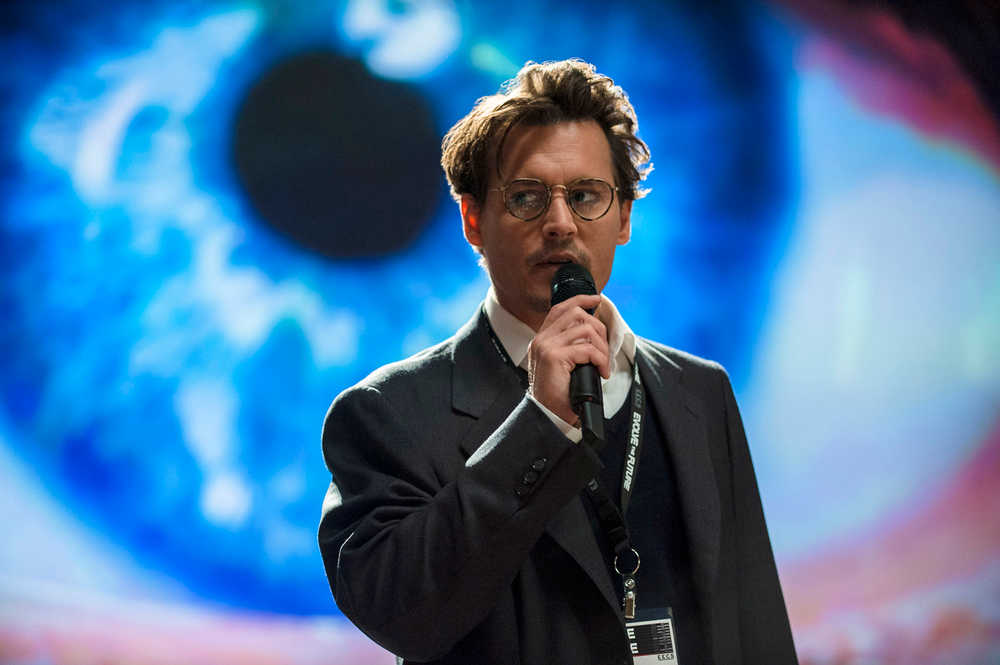“Transcendence”
Alcon Entertainment
1 hour, 59 minutes
Johnny Depp is so well-known playing over-the-top crazy characters it would only stand to reason the critics would finally start to lambaste his performance when he decided to play it straight. This week’s artificial intelligence cautionary tale “Transcendence” has been getting a critical drubbing over the last few days.
To be honest, I’m not really sure what the big problem is. I liked “Transcendence.” It’s not the greatest movie I’ve seen this year, but it’s certainly not a terrible film. Is it completely logical? Probably not. I’m guessing that true artificial intelligence would probably be a little bit more complicated than simply uploading your consciousness to a computer, but then again this is a science-fiction movie. I also don’t think it’s possible for a man to build an iron suit and fly around and shoot laser beams but everybody seemed to like that movie. Let’s put this in perspective.
Depp plays Will Caster, one of the smartest people in the world, and one of the leading figures in the development of artificial intelligence. His quantum supercomputer prototype artificial consciousness PINN is like Siri but with a lot more attitude. Caster, along with several other teams of researchers and programmers around the country, is getting closer to true computer awareness, that moment which he calls transcendence, where the machine will gain sentience and immediately surpass all human intelligence.
This is a real theoretical phenomenon known to scientists as The Singularity. Think of it as a tipping point, the place where knowledge suddenly begins to grow exponentially. In the films of James Cameron, it’s the point where the computers decide to abruptly blow everybody up. Naturally, the concept of Transcendence causes a lot of heartburn to certain people — especially people who’ve seen “The Terminator.” A fringe anti-technology group of radical terrorists called the RIFT decides to stop the development of AI at all costs and, within a few minutes of the opening credits, has perpetrated a vicious coordinated attack on computer research labs across the country, wiping out a huge swath of the AI braintrust, including one Dr. Will Caster, who is shot with a polonium-laced bullet, sealing his fate.
Caster’s wife Evelyn, a brilliant scientist in her own right, played by “The Town’s” Rebecca Hall, however, is not ready to give up. They’re close, and new research indicates the mapping and uploading of a living brain could yield amazing results. Caster, slowly, painfully dying, agrees to, essentially, meld with PINN. The results are amazing, and more than a little terrifying. Though Will’s body has died, his mind lives on inside the computer, soon to spread out onto the internet and into virtually every system on the planet.
Is Will Caster the same as he was, benevolent and humble, or is this a completely new creature, power-mad and ruthless, cloaked in a vision of the old Dr. Caster? And if it’s the latter, how long will mankind last under the whim of such an entity? Remember “Terminator.”
“Transcendence” is a fun, if a little slow, intellectual exercise. I enjoy movies like this, high concept science fiction that resemble, at least in basic structure rather than scope, an old “Twilight Zone” episode. Honestly, I’m not sure why the hate is flowing for this film. The acting is solid, the writing is adequate, and the cinematography and special effects are pretty top-notch.
Things get bogged down somewhat at the end and a few of the concepts seemed a little silly. Caster 2.0 uses his infinite intelligence to refine nanotechnology to point where he can literally create almost anything, heal any disease or mutilation, even build himself a new human body. This made for cool visuals, but iffy science. The introduction of the nanobots, wirelessly connected to his consciousness, into a human host created an enhanced being, strong, fast and possessed of a hive mind — kind of like the origin story for the Borg. This, on the other hand, made for cool science but iffy visuals.
Excellent character actor Clifton Collins Jr. is pretty much wasted, but other big actors get a chance to at least emote a little. Morgan Freeman, Cillian Murphy, and Paul Bettany each get a moment in the spotlight.
Though the end of the film seems a little confused as to whether Caster is indeed a sinister force, i.e. the Borg, or a benevolent one — curing cancer — I didn’t let it bother me. I only wish I hadn’t gone to the 10 o’clock show. If I’d gone earlier, the film’s slow pacing probably wouldn’t have bothered me at all. No, the movie isn’t particularly transcendent, but at least it’s diverting. Sometimes that’s enough.
Grade: B
“Transcendence” is rated PG-13 for sci-fi action and violence, some bloody images, brief strong language and sensuality.
Chris Jenness is a freelance graphic designer, artist and movie buff who lives in Nikiski.

